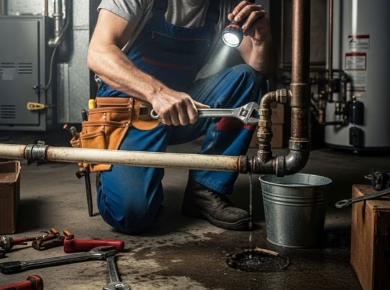If you’re considering a Domestic & General repair plan, you’ve probably encountered the frustration of unexpected appliance breakdowns—like when your fridge suddenly stops cooling and you realize you’re on the hook for hundreds of dollars in repairs. After helping countless clients navigate the murky waters of appliance insurance, here’s what actually works and what you need to know before signing on the dotted line.
The Allure of Repair Plans
Appliance repair plans, like those offered by Domestic & General, promise peace of mind in an era where everything seems to break at the most inconvenient times. They advertise coverage for everything from washing machines to TVs, often with enticing slogans that make it seem like you’re making a smart financial decision. But are they really worth the investment?
Let’s cut to the chase: while these plans can save you money in some scenarios, they’re not a one-size-fits-all solution. Understanding the nuances of what these plans cover—and what they don’t—is essential for making an informed decision.
Understanding the Coverage
When evaluating a Domestic & General repair plan, the first step is to dig into the specifics of what’s included. Many plans cover the cost of parts and labor but exclude certain types of damage or wear and tear. For example, if your dishwasher stops draining because of a clogged filter, that might not be covered. Here’s how to break it down:
What’s Typically Covered
- Mechanical breakdowns: Most plans will cover repairs for mechanical failures that occur outside of warranty periods.
- Parts replacement: If a crucial component fails, such as a motor in your washing machine, this is usually covered.
- Accidental damage: Some plans offer coverage for unintentional damage caused by you or other household members.
What’s Often Excluded
- Wear and tear: Issues like rust, corrosion, and general wear over time are typically not included.
- Pre-existing conditions: If the appliance had a known issue before you purchased the plan, don’t expect coverage.
- Cosmetic damage: Scratches, dents, and other aesthetic issues usually fall outside the coverage.
Now, here’s where most tutorials get it wrong: they don’t emphasize the importance of reading the fine print. Always review the terms and conditions carefully to avoid unexpected out-of-pocket expenses.
Assessing Your Needs
Before you buy a repair plan, assess your specific situation. Consider the age of your appliances, their reliability, and your own financial tolerance for unexpected repair costs. A brand-new appliance is less likely to need repairs, while an aging model might be a ticking time bomb for breakdowns.
Questions to Ask Yourself
- How old are your appliances? Older appliances are more likely to fail and may warrant a repair plan.
- What’s the average cost of repairs for your appliances? For example, the average cost to repair a washing machine can range from $200 to $400, depending on the issue.
- Are you comfortable taking the risk of paying out of pocket? If unexpected costs would strain your budget, a repair plan could provide reassurance.
Calculating the Costs
Let’s talk numbers. Domestic & General repair plans typically cost between £5 and £30 per month, depending on the type of appliance and level of coverage. To determine if it’s worth the expense, you’ll need to estimate your potential repair costs over time.
For instance, if you opt for a plan costing £15 per month, that’s £180 a year. If your fridge breaks down and needs a £300 repair, you’ve saved £120. However, if nothing breaks in that year, you’ve effectively lost £180. This cost-benefit analysis is crucial for making an informed decision.
Real-Life Case Studies
To illustrate the value (or lack thereof) of these plans, let’s look at some real-life scenarios:
Case Study 1: The Frugal Homeowner
Sarah has a ten-year-old washing machine that’s started making strange noises. Concerned about potential repairs, she opts for a Domestic & General plan at £12 per month. Within six months, the machine breaks down and requires a £250 repair. With the plan, she pays only the excess fee, saving herself a hefty sum.
Case Study 2: The New Appliance Owner
John just purchased a high-end dishwasher with a two-year warranty. He decides against a repair plan, reasoning that he can afford the occasional repair if needed. Two years later, the dishwasher still works perfectly, and he saves money by avoiding unnecessary premiums.
Both scenarios highlight that the effectiveness of a repair plan heavily depends on individual circumstances.
Here’s Exactly How to Decide
Wondering how to choose the right path? Here’s a step-by-step approach:
- Assess the age of your appliances: If they are older than five years, consider a repair plan.
- Calculate potential repair costs: Research common issues and costs associated with your specific appliances.
- Read the fine print: Understand what’s covered and what’s not to avoid surprises.
- Consider your comfort level: If the thought of unexpected costs causes anxiety, a repair plan may be worth it.
When Repair Plans Fall Short
Now, here’s why you should be cautious: not all plans provide equal value. Some may have high excess fees, or convoluted claims processes that make it difficult to get your money’s worth. You don’t want to end up in a situation where you’re paying for a service that’s hard to use.
Common Pitfalls to Avoid
- Ignoring the claims process: Some plans require extensive documentation that can be a hassle during a stressful time.
- Choosing convenience over cost: It may seem easier to sign up for a plan, but it could cost you more in the long run.
- Not comparing providers: Research different companies and plans to find the one that best suits your needs.
Final Thoughts on Repair Plans
In summary, Domestic & General repair plans can provide peace of mind under the right circumstances, but they’re not a blanket solution for everyone. By carefully assessing your appliances, calculating potential repair costs, and thoroughly understanding the coverage, you can make a choice that aligns with your financial situation and lifestyle. Remember, knowledge is power, especially when it comes to protecting your valuable appliances.
As you weigh your options, keep in mind that sometimes, the best plan may just be a savings account earmarked for potential repairs. It’s all about finding the right balance between risk and reassurance.






